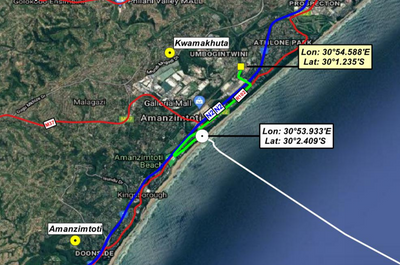By Sello Moloi
Zipline, which successfully launched a drone delivery project to take blood and other essential medical supplies from Rwanda's capital Kigali to the remote south-west of the country, is now looking to replicate the same project in Tanzania. The new trial is being funded by the UK's Department for International Development (DFID).
As with other similar projects using drones elsewhere in the continent, the main of this venture is to radically reduce the amount of time it takes to send supplies by road to health clinics.
The Ifakara Health Institute in Dar-es-Salaam, which specialises in treatments for malaria, HIV, tuberculosis as well as neonatal health issues, will be the local implementing partner.
Zipline’s small fixed-wing drones follow a pre-programmed path using GPS location data. The advantage of the design over multi-rotor models is that the vehicles can better cope with windy conditions and stay airborne longer. In theory, they can fly up to about 180 miles before running out of power, although Zipline tries to keep round trips to about half that distance.
Their drawback is that they require open space to land, in Zip’s case an area about the size of two parking spaces. To overcome this, Zip's drones descend to a height of about 16.5 feet when they reach their destination, and then release their load before coming to rest. The aircraft fly below 500 feet to avoid the airspace used by passenger planes.
DFID estimates that using drones to fly blood and medical supplies from Dodoma could save £47,400 (US$ 58,600 or TZS 128 million) a year compared to sending them by road.
Tanzania is much larger than Rwanda, and the country's size introduces a new factor – whether Zipline and other drone delivery projects can operate on a much larger scale.
Flights are planned to start in early 2017, and when they do it is estimated that deliveries made using the UAVs could help in over 50,000 births a year. This will drastically cut down the waiting times for mothers and newborns, delivering life-saving medicine in 19 minutes, instead of the 110 minutes traditional transport methods would take.






